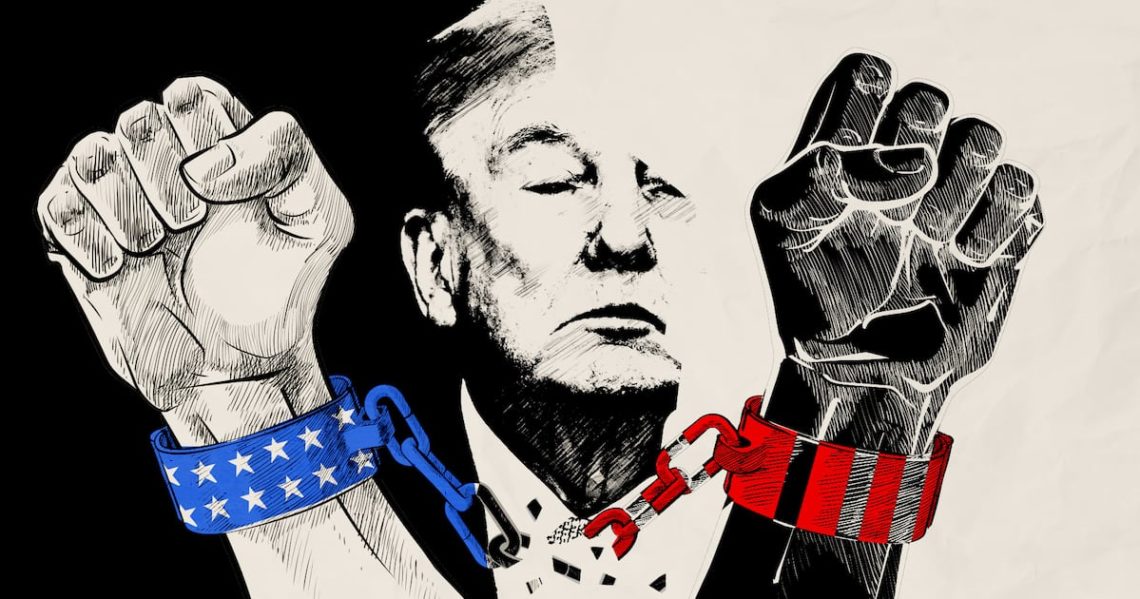In a week when Donald Trump trampled over America’s history, the president has set a series of frightening and disturbing precedents for the future.
A forever president, rigged ballots, intimidated lawmakers, a bowed populace, and carte blanche to destroy and to kill; this used to be the stuff of autocratic regimes and tinpot dictators.
This week, it was America.
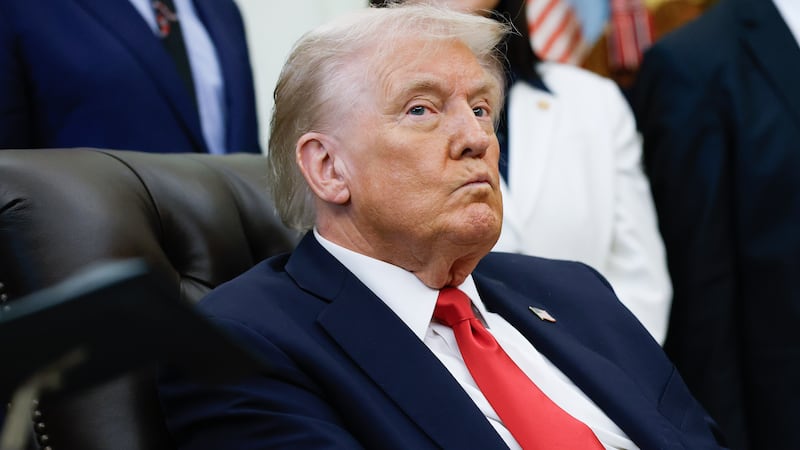
The symbolism of Trump’s demolition of the East Wing of the White House was so stark and so obvious that it shocked a country that had seemingly grown immune to his excesses.
The first images of the carnage resembled war photos from Gaza. The rubble and ruins of a building that was razed to the ground.
And the message Donald J. Trump was sending was unmistakable: He was going to do whatever the hell he wanted—and nobody could stop him.
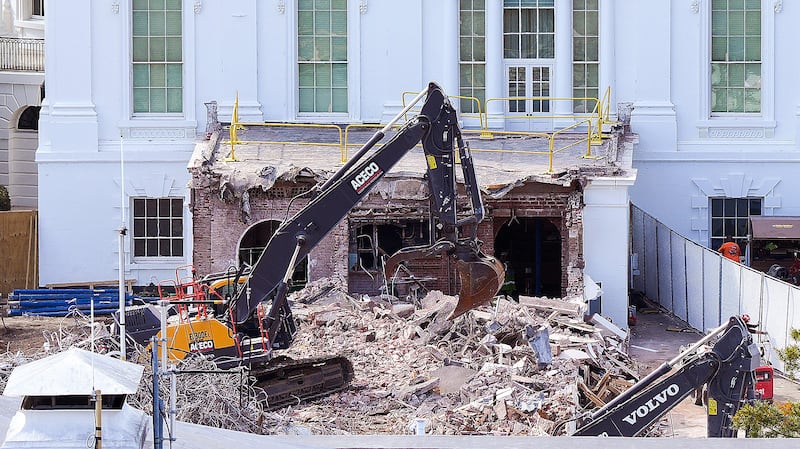
While Trump’s MAGA faithful have cheered him on over the past nine months—most effectively from his own stacked Cabinet table—the rest of us have been quietly dreading this moment.
For this was the week that we all feared would one day come: This was the week that the president shrugged off any pretense of propriety.
The White House teardown was just the public face of an administration that considers itself untouchable. Trump is Caesar, and the Republic is his to do with as he sees fit.
Despite the shock and awe of Trump’s first few months back in the Oval Office, it was, in many ways, just a test of his opposition’s resolve.
For all its bluster, Elon Musk’s DOGE was more of a diversion than the D.C. wrecking ball it was cracked up to be. Trump focused on easy targets like the porous border and DEI.
He quickly realized that his only real opposition was the courts, and even they could be better controlled with some strategic appointments to key positions.

Then came the carefully calibrated targeting of the president’s political enemies, a trademark move for any autocrat worth his or her salt. Trump’s smug insistence that he knows nothing about the prosecutions of the likes of former FBI Director James Comey, New York Attorney General Letitia James, and former National Security Advisor John Bolton would be funny if they weren’t so serious.
When Erik Siebert, the U.S. Attorney for Virginia, questioned the basis for any prosecutions, he was quickly replaced with Lindsey Halligan, a 36-year-old former beauty pageant contestant and Trump’s personal lawyer. The indictments promptly followed.
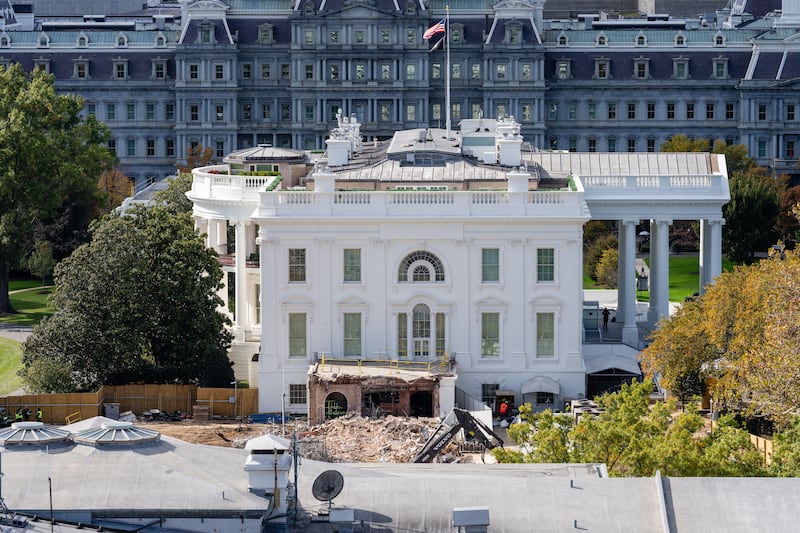
But this week, against the backdrop of the White House bulldozers, it feels different. More sinister. Harder to turn back.
The shackles are off. The checks and balances are all in his favor. The emperor is wearing all the clothes.
And there is a realization that this isn’t just some bad nightmare we will wake from. It is our new reality.
Trump is not just going after his old enemies. He said this week that his own Department of Justice may pay him $230 million in damages for the federal prosecutions launched against him before his election win last November—no matter the conflict of interest.
Even Trump admitted on Tuesday that the decision would go “across my desk,” and said: “It’s awfully strange to make a decision where I’m paying myself.”
Even Nixon, our most shamed president, would never have considered such a thing.
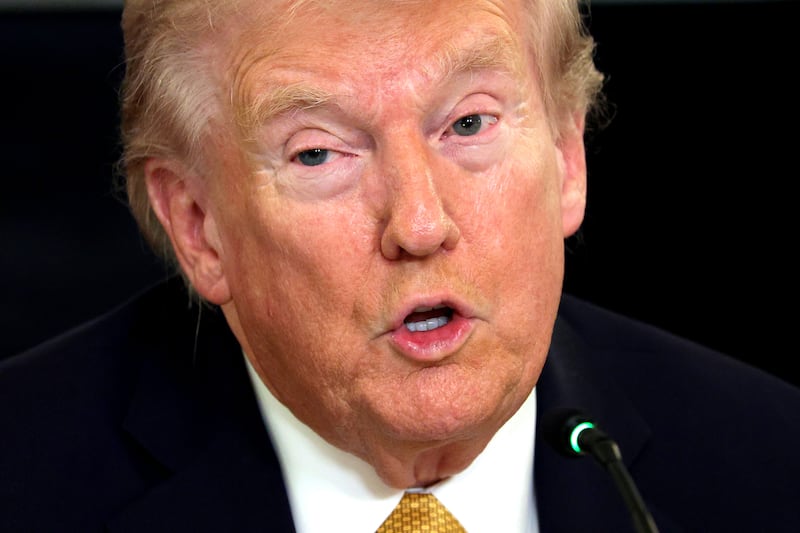
Consider that in the past few days, Trump has also hinted heavily that he might seek a third term.
On Sunday, the president posted a video on Truth Social that showed him ruling not just for a third term, but “4EVA.” A couple of days later, his MAGA blowhard Steve Bannon was confirming there were powers in place to circumvent the 22nd Amendment.
All the while, Trump is pushing his party to force through redistricting and change voting rights to alter the country’s ballot map and rustle up some more safe seats in the midterms.
Any GOP lawmaker who argues is on the outs.
When Rand Paul spoke out against Trump’s drug boat strikes in international waters, calling them “summary executions,” he was publicly ridiculed by the president and left out of Tuesday’s Rose Garden gathering of GOP senators.
The message to Republicans was again loud and clear: Defy me at your own risk.
On Thursday, Trump insisted he needed no legal authority to blow drug boats out of the water in the Caribbean and the Pacific. His words are worth recording here: “I don’t think we will necessarily ask for a Declaration of War,” he said. “I think we will just kill people that are bringing drugs into our country. OK? We’re going to kill them. They’re going to be, like, dead.”
The next day, another six oceangoing “drug dealers” were killed, bringing the death toll of Trump’s “narco-terrorism” campaign to at least 43.
In any other presidency, this week’s news that Trump was pardoning show-off lawmaker George Santos and crypto billionaire Changpeng Zhao would keep TV’s talking heads spinning for weeks. But it scarcely raised an eyebrow, even though Zhao’s company was rumored to be interested in working with the Trump family’s bitcoin business.
Asked about the possible conflict of interest by CNN’s Kaitlan Collins, Trump blew her off with an insult about “fake news.” The signs are that he may not have to worry about difficult questions going forward. The established media—including Fox News and Newsmax—are no longer allowed into the Pentagon press briefings, having refused to agree to draconian constraints on fair reporting.
The 60 outlets that did agree are made up largely of right-wing Trumpers. How long before the administration tries something similar in the White House briefing room?
After all, gagging the free press is another tactic straight from a dictator’s playbook.
The most public affront to all we hold dear—the destruction of the East Wing—may not even be the worst thing Trump did this week, but it was certainly the most discussed.
Trump learned his lessons from those early months when the courts blocked some of his most ambitious plans.
Months ago, he appointed William Scharf, another former personal lawyer and the lackey who hands him his Executive Orders to sign in the Oval Office, as chairman of the National Capital Planning Commission, the agency responsible for overseeing construction and renovations to government buildings across Washington. He also appointed two other loyalists to the Commission.
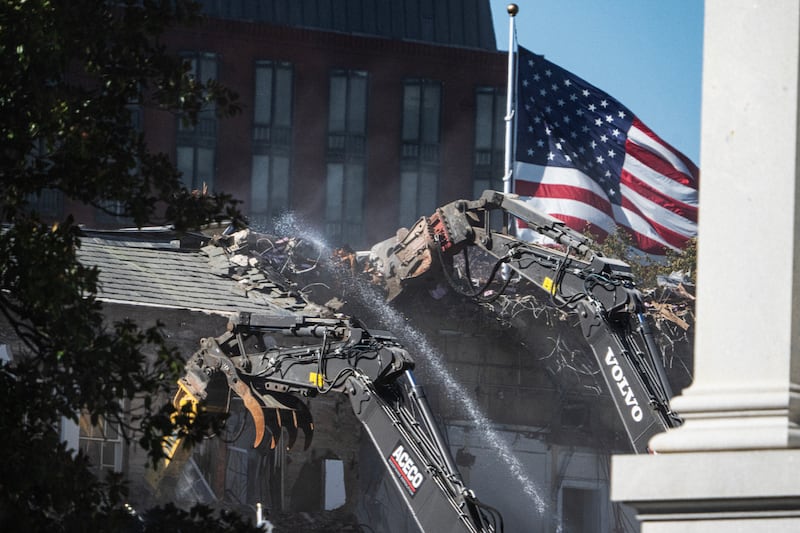
And then he went ahead and tore down the entire East Wing of the White House with little to no regard for the building’s long and meaningful history.
When asked who had permitted him to destroy the building and the gardens around it, he said, through Press Secretary Karoline Leavitt, that he had every right to do it and didn’t need to ask anyone.
No doubt the planning commission will be happy to rubber-stamp his plans for the Donald J. Trump Ballroom with its $300 million price tag.
As a narcissist, Trump genuinely does not believe he is doing anything wrong. His casual insouciance, celebrating his “achievements” over and over again to the watching media, is ample evidence.
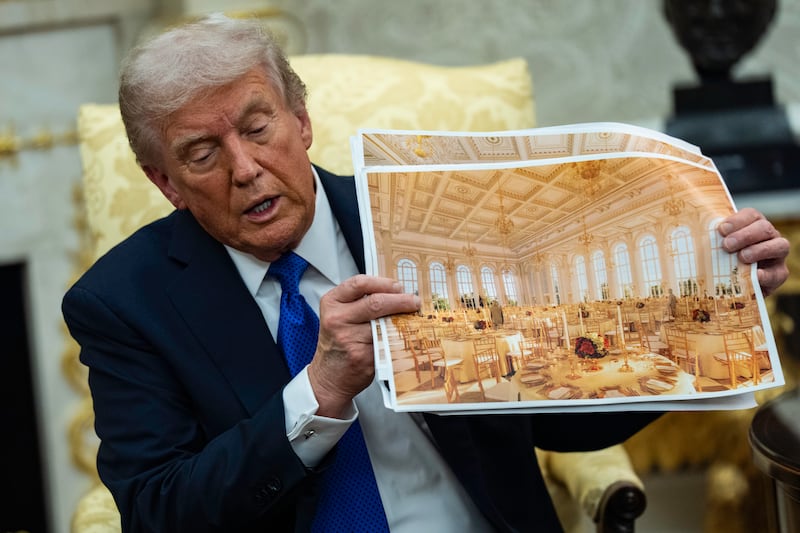
There’s a reason Trump sees Vladimir Putin, Kim Jong Un, and Xi Jinping as “friends.” Bullies only respond to strength. And Trump is a bully. He talks their language.
Russia, China, and North Korea all have leaders who do whatever they want. Nazi Germany had the same.
If we have learned anything this week, it is this: Now we have one, too.
The post Opinion: Tearing Down the White House Wasn’t Even the Worst Thing Trump Did This Week appeared first on The Daily Beast.
